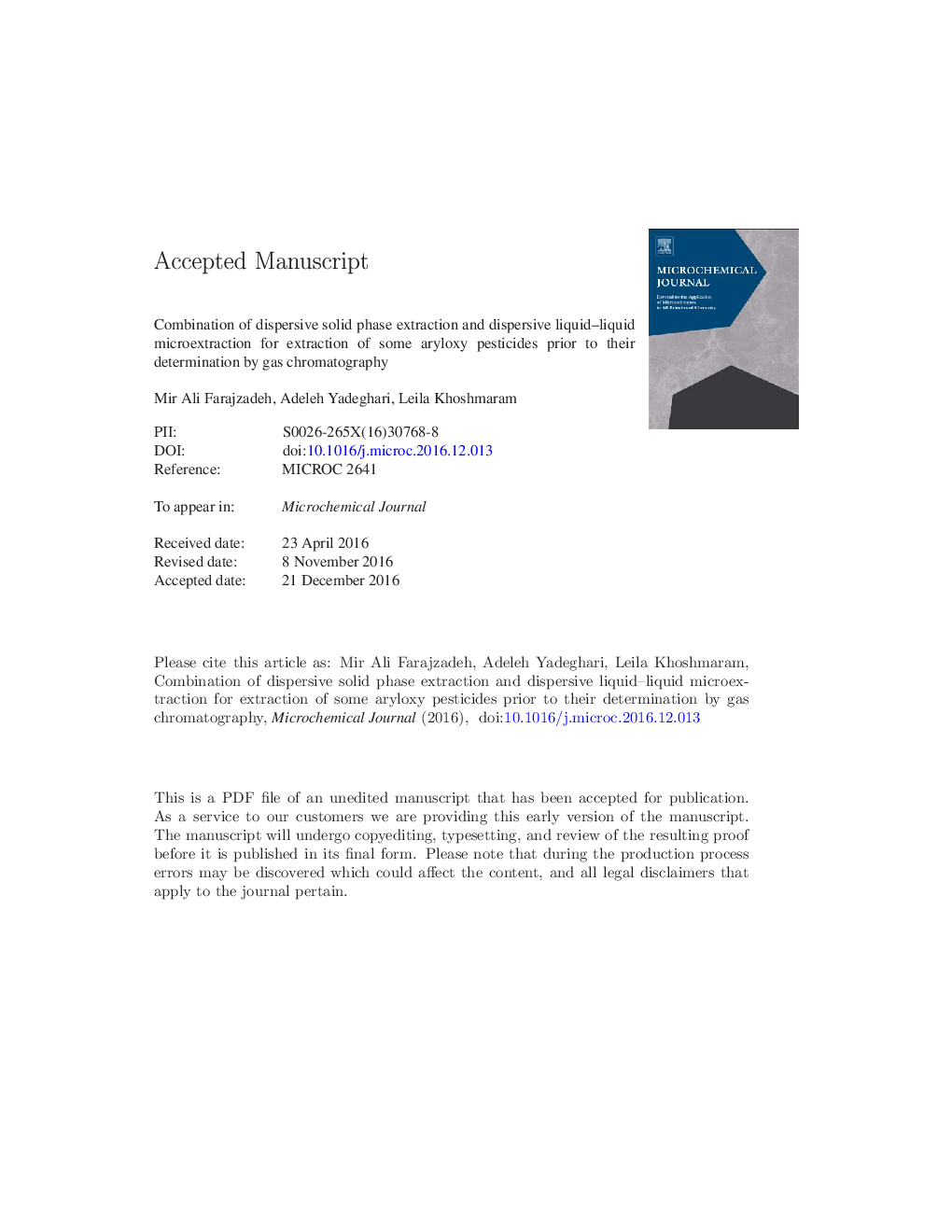| Article ID | Journal | Published Year | Pages | File Type |
|---|---|---|---|---|
| 5139270 | Microchemical Journal | 2017 | 37 Pages |
Abstract
In this study a new version of solid phase extraction performed in a narrow-bore tube using large volume of sample followed by dispersive liquid-liquid microextraction has been proposed to achieve a high sensitive analytical method. It has been used for the extraction and preconcentration of trace concentrations of some pesticides (metalaxyl, haloxyfop-r-methyl, clodinafop-propargyl, diclofop-methyl, and bromopropylate) in different vegetables (potato, tomato, onion, garlic, celery, radish, beet, and carrot) followed by gas chromatography-flame ionization detection. In the proposed method mg-level of a sorbent (C8) is mixed with a dispersive solvent (iso-propanol) and then dispersed into an aqueous solution placed into a narrow-bore tube. By this action, the sorbent passes through the solution in a short time instead of passing the solution from the cartridge in conventional solid phase extraction in a long time. To achieve high enrichment factors, an appropriate organic solvent (acetonitrile) is used to elute the compounds of interest from the sorbent for the following dispersive liquid-liquid microextraction procedure. Some important parameters which affect the extraction efficiency were studied. Under the optimum extraction conditions, the method showed wide linear ranges (0.08-10,000 μg Lâ 1). Enrichment factors and extraction recoveries were in the ranges of 1702-4147 and 31-75%, respectively. Detection limits were in the range of 0.02-0.25 μg Lâ 1 in solution (0.01-0.89 μg kgâ 1 in samples). LOQs were obtained in the range of 0.08-0.83 μg Lâ 1 in solution (0.04-2.9 μg kgâ 1 in samples). Relative standard deviations of 4-7% (n = 6) and 2-4% (n = 7) were obtained for 10 and 50 μg Lâ 1 of each analyte, respectively. The relative recoveries obtained in three different concentrations were 80-101%.
Keywords
SPMELOQMSPEDSPEDLLMESPEDispersive liquid–liquid microextractionflame ionization detectorpesticidesSample preparationSolid phase extractionMagnetic solid phase extractiondispersive solid phase extractionextraction recoverySolid phase microextractionLOD یا Limit of detectionFIDenrichment factorlimit of quantificationlimit of detectionGas chromatography
Related Topics
Physical Sciences and Engineering
Chemistry
Analytical Chemistry
Authors
Mir Ali Farajzadeh, Adeleh Yadeghari, Leila Khoshmaram,
